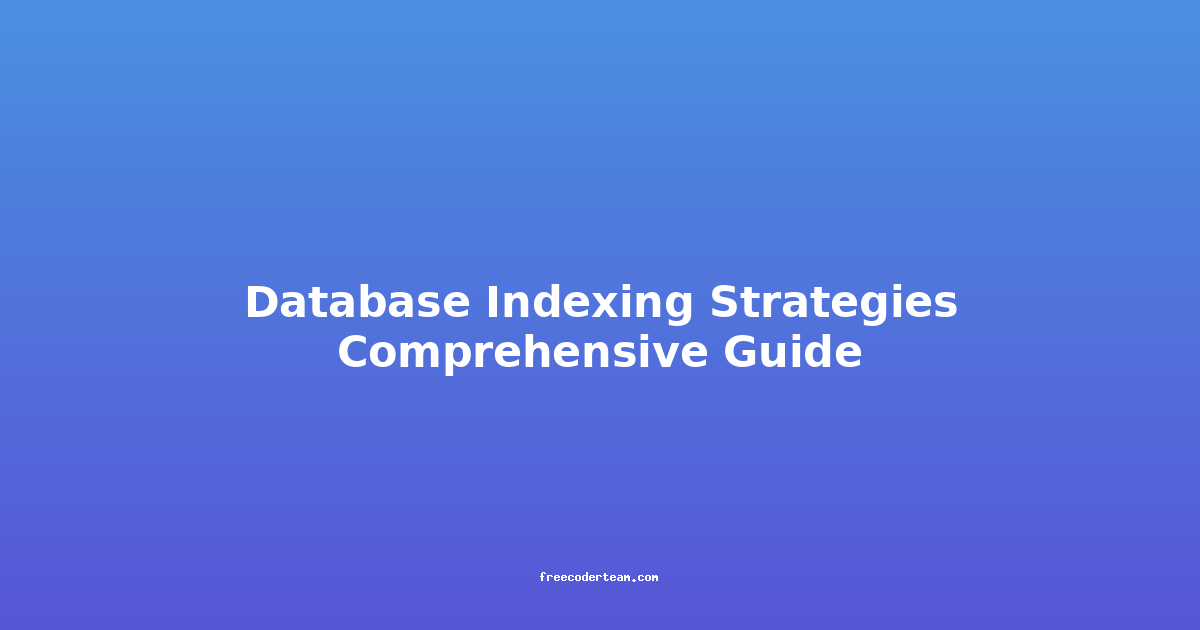Redis Caching Techniques Tutorial: A Comprehensive Guide
Caching is a fundamental technique used to improve the performance and scalability of applications by reducing the load on databases, APIs, or other slow data sources. Redis, a popular in-memory data structure store, is widely used for caching due to its speed, flexibility, and ease of use. In this tutorial, we'll explore various Redis caching techniques, best practices, and practical examples to help you implement effective caching strategies in your applications.
Table of Contents
- Introduction to Redis
- Why Use Redis for Caching?
- Setting Up Redis
- Redis Caching Techniques
- Best Practices for Redis Caching
- Monitoring and Troubleshooting
- Conclusion
Introduction to Redis
Redis is an open-source, in-memory data structure store that can be used as a database, cache, and message broker. It supports various data structures like strings, hashes, lists, sets, and sorted sets, making it highly versatile for different use cases. Redis's speed and low latency (often sub-millisecond response times) make it an ideal choice for caching.
Why Use Redis for Caching?
- Speed: Redis operates entirely in memory, providing blazing-fast access to data.
- Flexibility: Supports multiple data structures, allowing you to cache complex objects.
- Durability: Redis supports persistence options, allowing you to save data to disk without compromising speed.
- Ease of Use: Simple API and commands make it easy to integrate with applications.
- Scalability: Redis can be clustered for high-availability and horizontal scaling.
Setting Up Redis
Before diving into caching techniques, let's ensure Redis is installed and running. Here's how to set it up:
Installation
-
Install Redis:
# On Ubuntu/Debian sudo apt update sudo apt install redis-server # On macOS (using Homebrew) brew install redis -
Start Redis:
redis-server -
Verify Installation:
redis-cli pingOutput:
PONG
Connecting to Redis from Your Application
You can use a Redis client library for your programming language. Here's an example using Python's redis-py library:
# Install redis-py
pip install redis
# Connect to Redis
import redis
r = redis.Redis(host='localhost', port=6379, db=0)
Redis Caching Techniques
1. Key-Value Caching
The simplest form of caching involves storing key-value pairs in Redis. This technique is useful for caching individual objects, such as API responses or database query results.
Example: Caching User Data
# Cache user data
user_id = 123
user_data = {
"name": "John Doe",
"email": "john.doe@example.com"
}
# Serialize the data (e.g., using JSON)
import json
r.set(f"user:{user_id}", json.dumps(user_data))
# Retrieve user data
cached_user_data = r.get(f"user:{user_id}")
if cached_user_data:
user_data = json.loads(cached_user_data)
print("User data retrieved from cache:")
print(user_data)
else:
print("User data not found in cache.")
Best Practice:
- Use meaningful keys (e.g.,
user:<user_id>). - Serialize complex objects (e.g., using JSON or pickle) before storing them.
2. TTL (Time-To-Live) Caching
TTL caching allows you to set an expiration time for cache entries, ensuring that outdated data is automatically evicted.
Example: Caching with TTL
# Cache weather data with a TTL of 300 seconds (5 minutes)
weather_data = {
"location": "New York",
"temperature": 72,
"condition": "Sunny"
}
r.set(f"weather:NYC", json.dumps(weather_data), ex=300)
Best Practice:
- Use TTL to handle data that becomes stale over time, such as API responses or calculated results.
3. Hash Caching
Redis hashes are ideal for caching objects with multiple fields. They allow you to store and retrieve individual fields efficiently.
Example: Caching User Profiles
# Cache user profile fields using a hash
user_id = 123
r.hset(f"user:{user_id}", mapping={
"name": "John Doe",
"email": "john.doe@example.com",
"age": 30
})
# Retrieve individual fields
name = r.hget(f"user:{user_id}", "name")
print(f"Name: {name.decode()}")
# Retrieve all fields
user_profile = r.hgetall(f"user:{user_id}")
print("User Profile:")
for field, value in user_profile.items():
print(f"{field.decode()}: {value.decode()}")
Best Practice:
- Use hashes when you need to cache objects with multiple attributes and want to fetch individual fields without retrieving the entire object.
4. List-Based Caching
Redis lists can be used to cache ordered data, such as recent activity logs or trending items.
Example: Caching Recent Search Queries
# Cache recent search queries
search_key = "recent_searches"
current_search = "redis tutorial"
# Add to the list (with a limit of 10 recent searches)
r.lpush(search_key, current_search)
r.ltrim(search_key, 0, 9) # Keep only the top 10 searches
# Retrieve recent searches
recent_searches = r.lrange(search_key, 0, -1)
print("Recent Searches:")
for search in recent_searches:
print(search.decode())
Best Practice:
- Use lists when you need to cache ordered data and want to maintain a fixed size.
5. Cache Preloading (Warm-Up)
Cache preloading involves populating the cache with data before it is requested. This technique is useful for reducing latency during peak loads.
Example: Preloading Product Data
# Preload product data into Redis
products = [
{"id": 1, "name": "Laptop", "price": 999},
{"id": 2, "name": "Smartphone", "price": 499},
{"id": 3, "name": "Tablet", "price": 399}
]
for product in products:
r.set(f"product:{product['id']}", json.dumps(product))
# Retrieve a product
product_id = 1
cached_product = r.get(f"product:{product_id}")
if cached_product:
product = json.loads(cached_product)
print(f"Product retrieved from cache: {product['name']}")
else:
print("Product not found in cache.")
Best Practice:
- Preload frequently accessed data during application startup or idle periods to reduce latency during peak times.
Best Practices for Redis Caching
-
Use Meaningful Keys: Construct keys that are intuitive and easy to manage. For example, use namespaces (e.g.,
user:,product:) to group related data. -
Implement Cache Aside Pattern: Instead of replacing the database entirely, use Redis as a cache layer. If data is not found in Redis, fetch it from the database and store it in the cache for future requests.
-
Monitor Cache Hit Ratios: Track the percentage of requests served from the cache to evaluate its effectiveness. High hit ratios indicate efficient caching.
-
Handle Cache Invalidations: Decide on a strategy for invalidating stale data. Options include:
- Time-based invalidation: Use TTLs.
- Event-driven invalidation: Invalidate cache entries when the underlying data changes.
-
Avoid Caching Sensitive Data: Be cautious when caching sensitive information. Use encryption or hashing if necessary.
-
Leverage Redis Clustering for Scalability: For high traffic applications, consider using Redis Cluster to distribute the cache across multiple nodes.
Monitoring and Troubleshooting
-
Use Redis CLI:
redis-cli monitorThis command logs all Redis commands in real-time, helping you understand cache usage patterns.
-
Enable Redis Metrics: Use tools like Prometheus and Grafana to monitor Redis metrics such as memory usage, cache hit ratios, and command latency.
-
Profile Cache Performance: Use
redis-cli --latencyto measure Redis's latency under load.
Conclusion
Redis is a powerful tool for implementing caching in applications, offering speed, flexibility, and ease of use. By leveraging techniques like key-value caching, TTL, hashes, and list-based caching, you can optimize your application's performance and reduce load on backend systems. Remember to follow best practices such as using meaningful keys, monitoring hit ratios, and handling cache invalidations to ensure your caching strategy is effective.
With Redis, caching becomes an integral part of building scalable and responsive applications. Whether you're caching user profiles, API responses, or trending data, Redis provides the tools you need to make your application performant and efficient.
Happy Caching! 🚀
Note: This tutorial assumes basic familiarity with Redis commands and programming concepts. For more advanced use cases, such as clustering and sharding, additional resources may be helpful.




